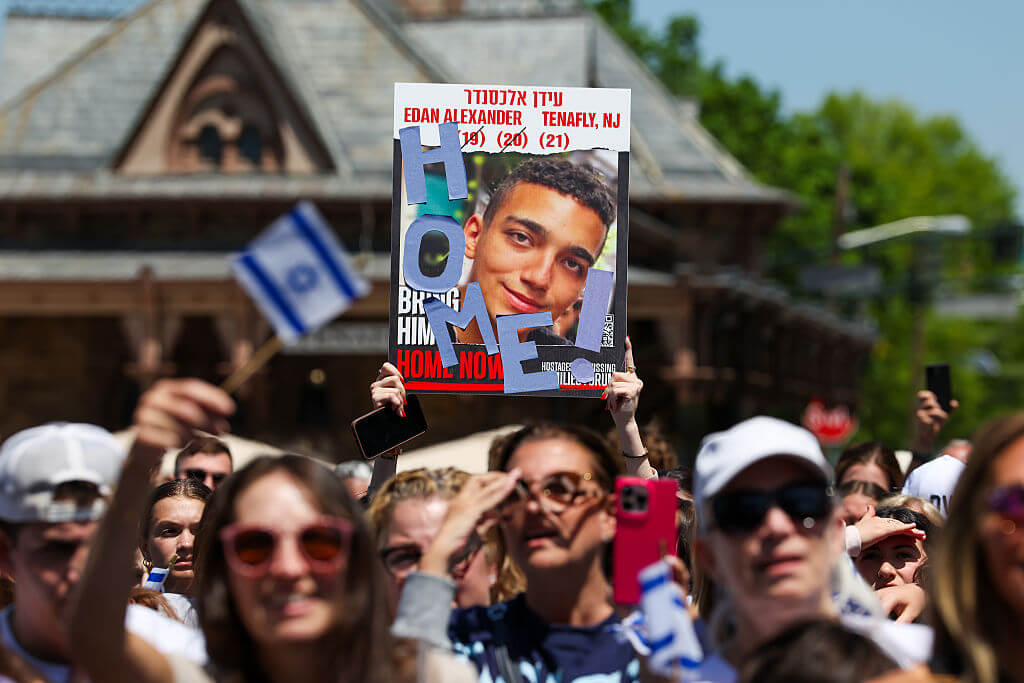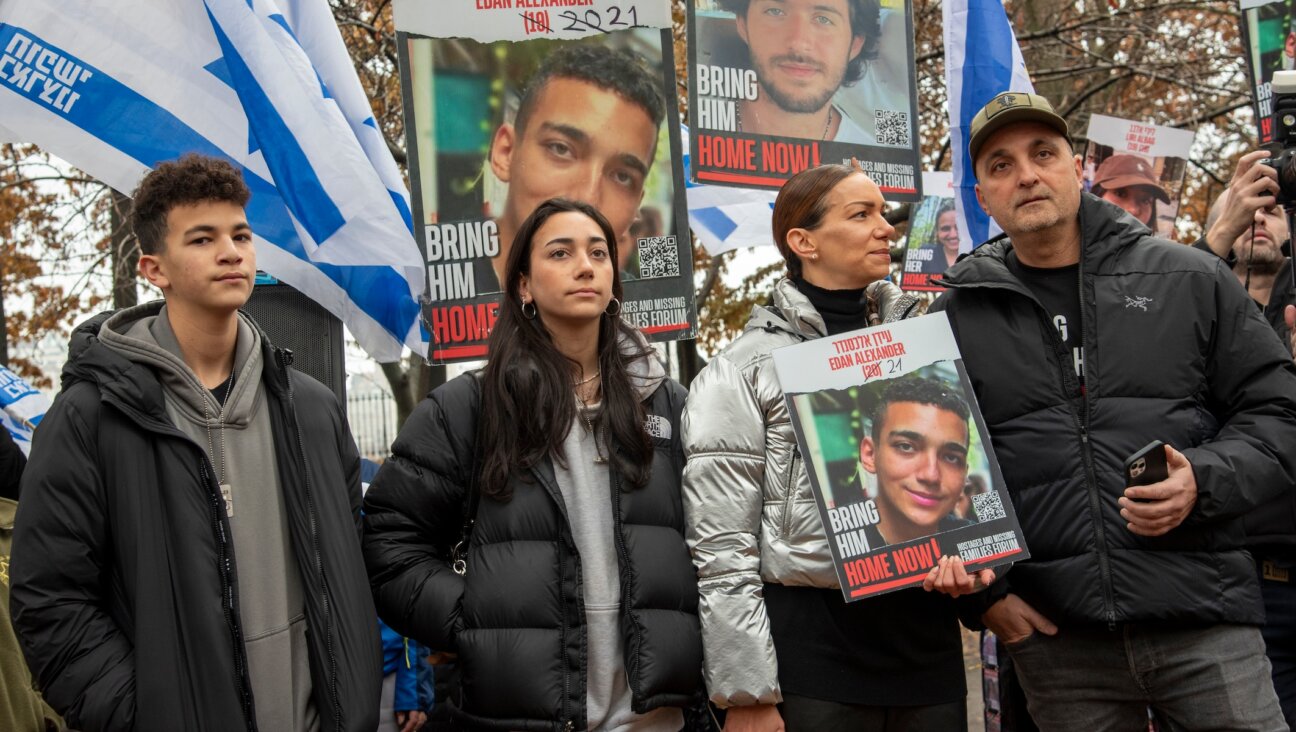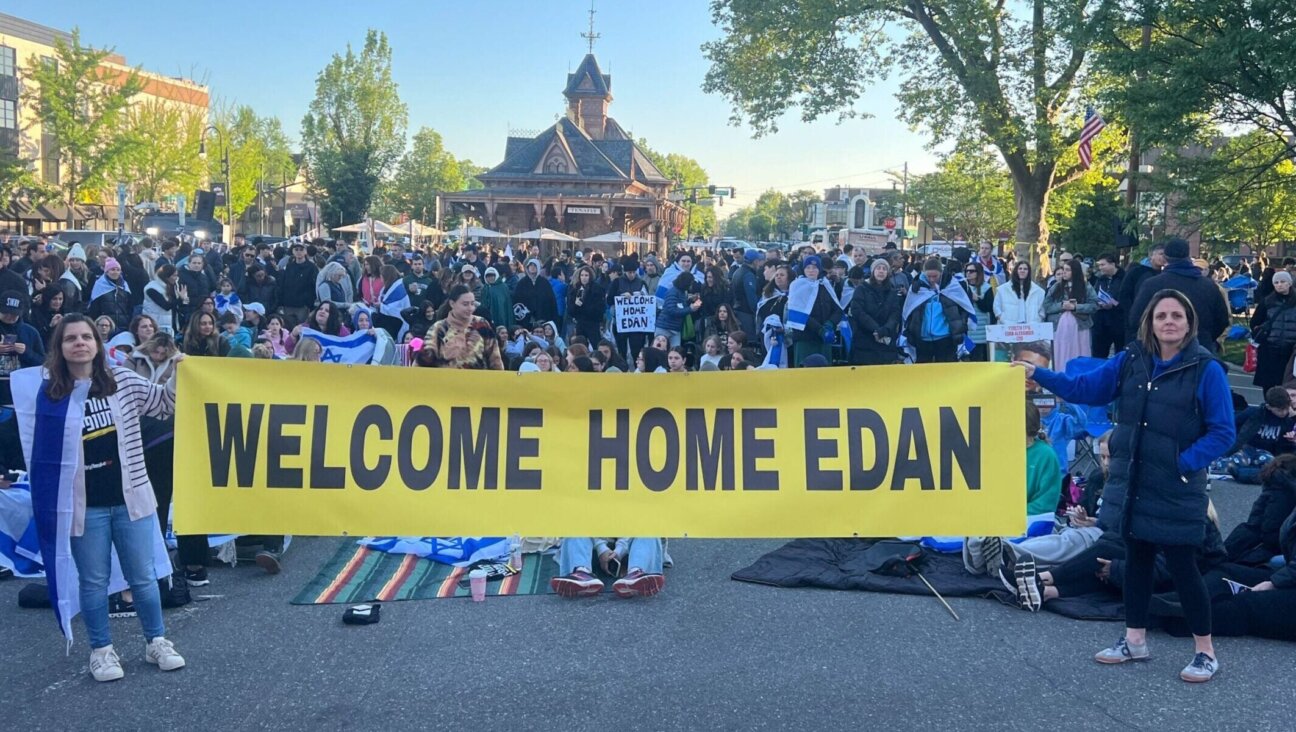Holocaust Researchers Use Imaging to Find Mass Graves

Places of Slaughter: Members of a Nazi unit firing at men standing at the bottom of a trench. Image by U.S. Holocaust Museum
An international team of researchers launched a study of Holocaust-era killing sites in the Kremenets region in western Ukraine.
The project was initiated this year by the International Holocaust Remembrance Alliance, or IHRA, whose April report on killing sites ruled out conducting archeological digs in such locales as this violates Jewish religious laws.
The study team, led by Meylakh Sheykhet, Ukraine director for the Union of Councils for Jews in the Former Soviet Union, earlier this month used geophysical imaging to delineate an area where in 1942 Nazi soldiers buried thousands of Jews they had shot. Ukraine has thousands of killing sites of various sizes.
“The actual place where they are buried is hard to locate because the designated place where we are searching was demarcated based on testimonies,” said Ksenya Bondar, a geologist from the Taras Shevchenko National University of Kiev, who participated in the survey. “We need to scan the area strip by strip.”
The survey in Kremenets is part of a larger project launched earlier this year by Sheykhet with funding from the German federal government, which he secured from Germany’s embassy in Ukraine. Ukrainian and British members of this team performed several scans earlier this year, he said.
“The scanning is necessary now because these are the last few years when we still have testimonies of people who can tell us where to look,” Sheykhet said in explaining why he pushed for the project.
He also cited construction across eastern Europe, which sometimes is performed in mass graves with or without contractors’ knowledge.
“Technology now allows us to set the historical record without disturbing the victims’ rights not to be disturbed in their final resting place. This is a combination of circumstances which must be acted upon,” Sheykhet added.
The Forward is free to read, but it isn’t free to produce

I hope you appreciated this article. Before you go, I’d like to ask you to please support the Forward.
Now more than ever, American Jews need independent news they can trust, with reporting driven by truth, not ideology. We serve you, not any ideological agenda.
At a time when other newsrooms are closing or cutting back, the Forward has removed its paywall and invested additional resources to report on the ground from Israel and around the U.S. on the impact of the war, rising antisemitism and polarized discourse.
This is a great time to support independent Jewish journalism you rely on. Make a gift today!
— Rachel Fishman Feddersen, Publisher and CEO
Support our mission to tell the Jewish story fully and fairly.
Most Popular
- 1

Fast Forward Ye debuts ‘Heil Hitler’ music video that includes a sample of a Hitler speech
- 2

Opinion It looks like Israel totally underestimated Trump
- 3

Fast Forward Student suspended for ‘F— the Jews’ video defends himself on antisemitic podcast
- 4

Culture Cardinals are Catholic, not Jewish — so why do they all wear yarmulkes?
In Case You Missed It
-

News In Edan Alexander’s hometown in New Jersey, months of fear and anguish give way to joy and relief
-

Fast Forward What’s next for suspended student who posted ‘F— the Jews’ video? An alt-right media tour
-

Opinion Despite Netanyahu, Edan Alexander is finally free
-

Opinion A judge just released another pro-Palestinian activist. Here’s why that’s good for the Jews
-
Shop the Forward Store
100% of profits support our journalism
Republish This Story
Please read before republishing
We’re happy to make this story available to republish for free, unless it originated with JTA, Haaretz or another publication (as indicated on the article) and as long as you follow our guidelines.
You must comply with the following:
- Credit the Forward
- Retain our pixel
- Preserve our canonical link in Google search
- Add a noindex tag in Google search
See our full guidelines for more information, and this guide for detail about canonical URLs.
To republish, copy the HTML by clicking on the yellow button to the right; it includes our tracking pixel, all paragraph styles and hyperlinks, the author byline and credit to the Forward. It does not include images; to avoid copyright violations, you must add them manually, following our guidelines. Please email us at [email protected], subject line “republish,” with any questions or to let us know what stories you’re picking up.














